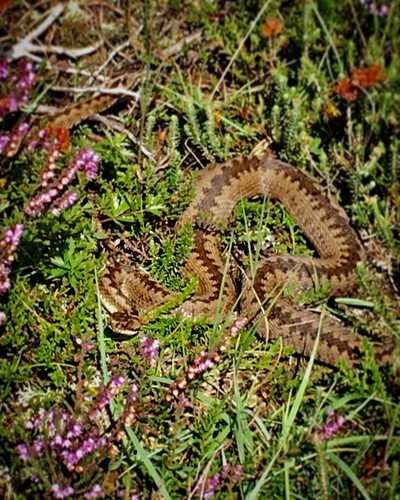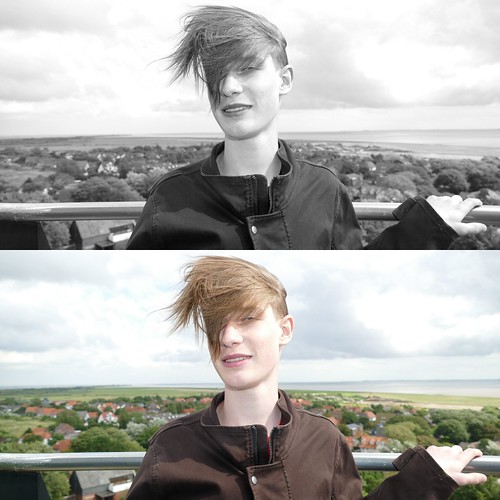Ng showed significantly reduced capacity to form colonies compared to cells isolated from the MedChemExpress Chebulagic acid Stat3fl/fl;BLG-Cre2 JSI-124 site glands (Fig. 1G). This may be a consequence of the reduced levels of pAkt and pErk that are present in cells deficient in Stat3 (Fig. 1D) and suggests that Stat3 plays a crucial role in maintenance of the proliferative capacity of CD24+ CD49flo CD61+ luminal progenitors. This result is all the more remarkable given that full deletion of both Stat3 alleles was not obtained in cells from these Stat3fl/fl;BLG-Cre+ mice (Fig. S3), suggesting biological selection against loss of the second Stat3 allele. To assess the  ability of mammary stem cells to repopulate the fat pad and form a normal mammary epithelial network in the absence of Stat3, the CD24+ CD49fhi basal cells, which contain MaSCs, were sorted from glands of Stat3fl/fl;BLG-Cre2 and Stat3fl/ fl ;BLG-Cre+ females four weeks after natural weaning and cells were transplanted into cleared fat pads of immunocompromised nude mice. The outgrowths were analysed after five weeks. MaSCs isolated from both Stat3fl/fl;BLG-Cre2 and Stat3fl/fl;BLG-Cre+ mice were able to repopulate fat pads and generated ductal outgrowths with side branches (Fig. 2A). However, the outgrowths originating from Stat3fl/fl;BLG-Cre+ cells were phenotypically different and displayed more
ability of mammary stem cells to repopulate the fat pad and form a normal mammary epithelial network in the absence of Stat3, the CD24+ CD49fhi basal cells, which contain MaSCs, were sorted from glands of Stat3fl/fl;BLG-Cre2 and Stat3fl/ fl ;BLG-Cre+ females four weeks after natural weaning and cells were transplanted into cleared fat pads of immunocompromised nude mice. The outgrowths were analysed after five weeks. MaSCs isolated from both Stat3fl/fl;BLG-Cre2 and Stat3fl/fl;BLG-Cre+ mice were able to repopulate fat pads and generated ductal outgrowths with side branches (Fig. 2A). However, the outgrowths originating from Stat3fl/fl;BLG-Cre+ cells were phenotypically different and displayed more  side branching than those from Stat3fl/fl;BLG-Cre2 cells. Limiting dilution transplantation assays were performed and analysed using Extreme Limiting Dilution 25837696 Analysis software (http://bioinf.wehi.edu.au/software/elda/) [34]. These data showed that the repopulating frequency of the CD24+ CD49fhi MaSC-enriched population from Stat3fl/fl;BLG-Cre+ mice was fourfold lower than that of the Stat3fl/fl;BLG-Cre2 cells after transplantation (Fig. 2B). In order to confirm that these outgrowths originated from mammary stem cells with long-term repopulating capacity, we performed secondary fat pad transplantation experiments. Primary outgrowths obtained from injection of 1,000 basal cells from Stat3fl/fl;BLG-Cre2 or Stat3fl/fl;BLG-Cre+ glands into cleared fat pads were collected and enzymatically dispersed. Subsequently, 20,000 cells from single cell suspensions were injected into the cleared fat pads of immunocompromised mice. After five weeks, the fat pads were checked for secondary outgrowths. We did not observe any differences in terms of the number of outgrowths or their size between Stat3fl/fl;BLG-Cre2 and Stat3fl/fl;BLG-Cre+ groups (Fig. S4). This suggests that, although there were fewer MaSCs in Stat3fl/fl;BLG-Cre+ glands following involution, mammary stem cells from both Stat3fl/fl;BLG-Cre2 and Stat3fl/fl;BLG-Cre+ glands have a similar self-renewal potential. Interpretation of the fat pad transplantation data from parous Stat3fl/fl;BLG-Cre mice is confounded by the possibility that outgrowths originated either from MaSCs that had activated the BLG promoter and deleted the Stat3 gene or from PI-MECs that have multipotent properties, can give rise to outgrowths upon transplantation, and express basal population markers [18,19]. InStat3 and Mammary Stem Cellsorder to further refine our investigation of a role for Stat3 in MaSCs so as to exclude PI-MECs we utilized a K14-Cre transgene crossed with Stat3fl/fl mice. This experimental setting allowed conditional Stat3 deletion in all K14 expressing cells in the embryo. Recently, Van Keymeulen and coworkers demonstrated that embryonic K14+ mammary stem/progenitor cells give rise to all.Ng showed significantly reduced capacity to form colonies compared to cells isolated from the Stat3fl/fl;BLG-Cre2 glands (Fig. 1G). This may be a consequence of the reduced levels of pAkt and pErk that are present in cells deficient in Stat3 (Fig. 1D) and suggests that Stat3 plays a crucial role in maintenance of the proliferative capacity of CD24+ CD49flo CD61+ luminal progenitors. This result is all the more remarkable given that full deletion of both Stat3 alleles was not obtained in cells from these Stat3fl/fl;BLG-Cre+ mice (Fig. S3), suggesting biological selection against loss of the second Stat3 allele. To assess the ability of mammary stem cells to repopulate the fat pad and form a normal mammary epithelial network in the absence of Stat3, the CD24+ CD49fhi basal cells, which contain MaSCs, were sorted from glands of Stat3fl/fl;BLG-Cre2 and Stat3fl/ fl ;BLG-Cre+ females four weeks after natural weaning and cells were transplanted into cleared fat pads of immunocompromised nude mice. The outgrowths were analysed after five weeks. MaSCs isolated from both Stat3fl/fl;BLG-Cre2 and Stat3fl/fl;BLG-Cre+ mice were able to repopulate fat pads and generated ductal outgrowths with side branches (Fig. 2A). However, the outgrowths originating from Stat3fl/fl;BLG-Cre+ cells were phenotypically different and displayed more side branching than those from Stat3fl/fl;BLG-Cre2 cells. Limiting dilution transplantation assays were performed and analysed using Extreme Limiting Dilution 25837696 Analysis software (http://bioinf.wehi.edu.au/software/elda/) [34]. These data showed that the repopulating frequency of the CD24+ CD49fhi MaSC-enriched population from Stat3fl/fl;BLG-Cre+ mice was fourfold lower than that of the Stat3fl/fl;BLG-Cre2 cells after transplantation (Fig. 2B). In order to confirm that these outgrowths originated from mammary stem cells with long-term repopulating capacity, we performed secondary fat pad transplantation experiments. Primary outgrowths obtained from injection of 1,000 basal cells from Stat3fl/fl;BLG-Cre2 or Stat3fl/fl;BLG-Cre+ glands into cleared fat pads were collected and enzymatically dispersed. Subsequently, 20,000 cells from single cell suspensions were injected into the cleared fat pads of immunocompromised mice. After five weeks, the fat pads were checked for secondary outgrowths. We did not observe any differences in terms of the number of outgrowths or their size between Stat3fl/fl;BLG-Cre2 and Stat3fl/fl;BLG-Cre+ groups (Fig. S4). This suggests that, although there were fewer MaSCs in Stat3fl/fl;BLG-Cre+ glands following involution, mammary stem cells from both Stat3fl/fl;BLG-Cre2 and Stat3fl/fl;BLG-Cre+ glands have a similar self-renewal potential. Interpretation of the fat pad transplantation data from parous Stat3fl/fl;BLG-Cre mice is confounded by the possibility that outgrowths originated either from MaSCs that had activated the BLG promoter and deleted the Stat3 gene or from PI-MECs that have multipotent properties, can give rise to outgrowths upon transplantation, and express basal population markers [18,19]. InStat3 and Mammary Stem Cellsorder to further refine our investigation of a role for Stat3 in MaSCs so as to exclude PI-MECs we utilized a K14-Cre transgene crossed with Stat3fl/fl mice. This experimental setting allowed conditional Stat3 deletion in all K14 expressing cells in the embryo. Recently, Van Keymeulen and coworkers demonstrated that embryonic K14+ mammary stem/progenitor cells give rise to all.
side branching than those from Stat3fl/fl;BLG-Cre2 cells. Limiting dilution transplantation assays were performed and analysed using Extreme Limiting Dilution 25837696 Analysis software (http://bioinf.wehi.edu.au/software/elda/) [34]. These data showed that the repopulating frequency of the CD24+ CD49fhi MaSC-enriched population from Stat3fl/fl;BLG-Cre+ mice was fourfold lower than that of the Stat3fl/fl;BLG-Cre2 cells after transplantation (Fig. 2B). In order to confirm that these outgrowths originated from mammary stem cells with long-term repopulating capacity, we performed secondary fat pad transplantation experiments. Primary outgrowths obtained from injection of 1,000 basal cells from Stat3fl/fl;BLG-Cre2 or Stat3fl/fl;BLG-Cre+ glands into cleared fat pads were collected and enzymatically dispersed. Subsequently, 20,000 cells from single cell suspensions were injected into the cleared fat pads of immunocompromised mice. After five weeks, the fat pads were checked for secondary outgrowths. We did not observe any differences in terms of the number of outgrowths or their size between Stat3fl/fl;BLG-Cre2 and Stat3fl/fl;BLG-Cre+ groups (Fig. S4). This suggests that, although there were fewer MaSCs in Stat3fl/fl;BLG-Cre+ glands following involution, mammary stem cells from both Stat3fl/fl;BLG-Cre2 and Stat3fl/fl;BLG-Cre+ glands have a similar self-renewal potential. Interpretation of the fat pad transplantation data from parous Stat3fl/fl;BLG-Cre mice is confounded by the possibility that outgrowths originated either from MaSCs that had activated the BLG promoter and deleted the Stat3 gene or from PI-MECs that have multipotent properties, can give rise to outgrowths upon transplantation, and express basal population markers [18,19]. InStat3 and Mammary Stem Cellsorder to further refine our investigation of a role for Stat3 in MaSCs so as to exclude PI-MECs we utilized a K14-Cre transgene crossed with Stat3fl/fl mice. This experimental setting allowed conditional Stat3 deletion in all K14 expressing cells in the embryo. Recently, Van Keymeulen and coworkers demonstrated that embryonic K14+ mammary stem/progenitor cells give rise to all.Ng showed significantly reduced capacity to form colonies compared to cells isolated from the Stat3fl/fl;BLG-Cre2 glands (Fig. 1G). This may be a consequence of the reduced levels of pAkt and pErk that are present in cells deficient in Stat3 (Fig. 1D) and suggests that Stat3 plays a crucial role in maintenance of the proliferative capacity of CD24+ CD49flo CD61+ luminal progenitors. This result is all the more remarkable given that full deletion of both Stat3 alleles was not obtained in cells from these Stat3fl/fl;BLG-Cre+ mice (Fig. S3), suggesting biological selection against loss of the second Stat3 allele. To assess the ability of mammary stem cells to repopulate the fat pad and form a normal mammary epithelial network in the absence of Stat3, the CD24+ CD49fhi basal cells, which contain MaSCs, were sorted from glands of Stat3fl/fl;BLG-Cre2 and Stat3fl/ fl ;BLG-Cre+ females four weeks after natural weaning and cells were transplanted into cleared fat pads of immunocompromised nude mice. The outgrowths were analysed after five weeks. MaSCs isolated from both Stat3fl/fl;BLG-Cre2 and Stat3fl/fl;BLG-Cre+ mice were able to repopulate fat pads and generated ductal outgrowths with side branches (Fig. 2A). However, the outgrowths originating from Stat3fl/fl;BLG-Cre+ cells were phenotypically different and displayed more side branching than those from Stat3fl/fl;BLG-Cre2 cells. Limiting dilution transplantation assays were performed and analysed using Extreme Limiting Dilution 25837696 Analysis software (http://bioinf.wehi.edu.au/software/elda/) [34]. These data showed that the repopulating frequency of the CD24+ CD49fhi MaSC-enriched population from Stat3fl/fl;BLG-Cre+ mice was fourfold lower than that of the Stat3fl/fl;BLG-Cre2 cells after transplantation (Fig. 2B). In order to confirm that these outgrowths originated from mammary stem cells with long-term repopulating capacity, we performed secondary fat pad transplantation experiments. Primary outgrowths obtained from injection of 1,000 basal cells from Stat3fl/fl;BLG-Cre2 or Stat3fl/fl;BLG-Cre+ glands into cleared fat pads were collected and enzymatically dispersed. Subsequently, 20,000 cells from single cell suspensions were injected into the cleared fat pads of immunocompromised mice. After five weeks, the fat pads were checked for secondary outgrowths. We did not observe any differences in terms of the number of outgrowths or their size between Stat3fl/fl;BLG-Cre2 and Stat3fl/fl;BLG-Cre+ groups (Fig. S4). This suggests that, although there were fewer MaSCs in Stat3fl/fl;BLG-Cre+ glands following involution, mammary stem cells from both Stat3fl/fl;BLG-Cre2 and Stat3fl/fl;BLG-Cre+ glands have a similar self-renewal potential. Interpretation of the fat pad transplantation data from parous Stat3fl/fl;BLG-Cre mice is confounded by the possibility that outgrowths originated either from MaSCs that had activated the BLG promoter and deleted the Stat3 gene or from PI-MECs that have multipotent properties, can give rise to outgrowths upon transplantation, and express basal population markers [18,19]. InStat3 and Mammary Stem Cellsorder to further refine our investigation of a role for Stat3 in MaSCs so as to exclude PI-MECs we utilized a K14-Cre transgene crossed with Stat3fl/fl mice. This experimental setting allowed conditional Stat3 deletion in all K14 expressing cells in the embryo. Recently, Van Keymeulen and coworkers demonstrated that embryonic K14+ mammary stem/progenitor cells give rise to all.
